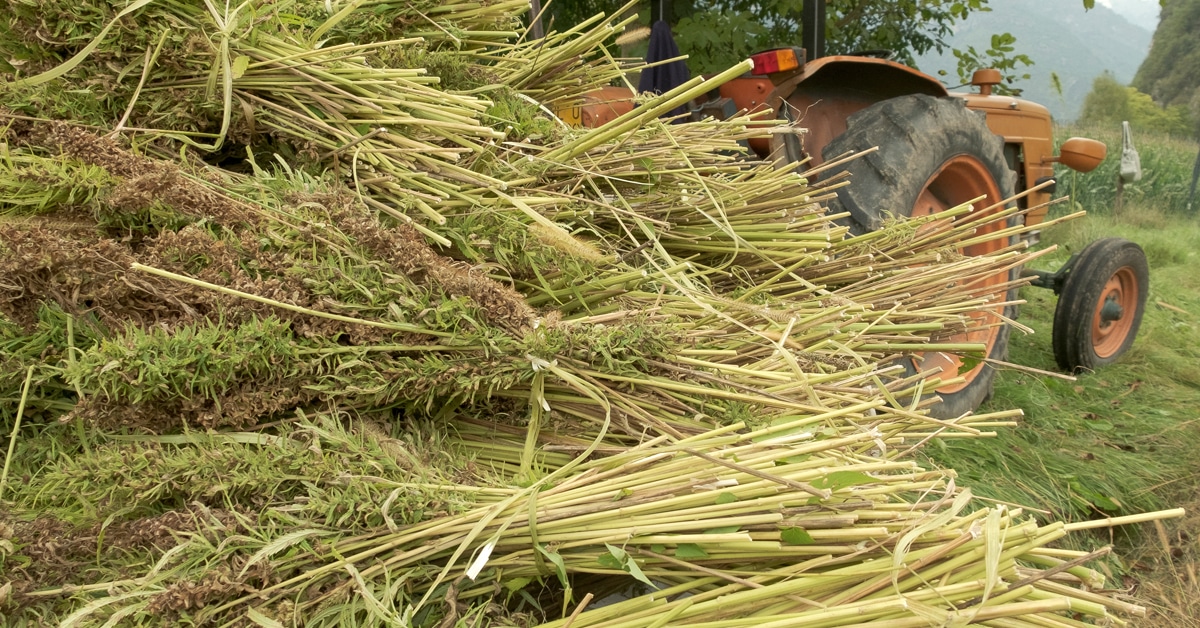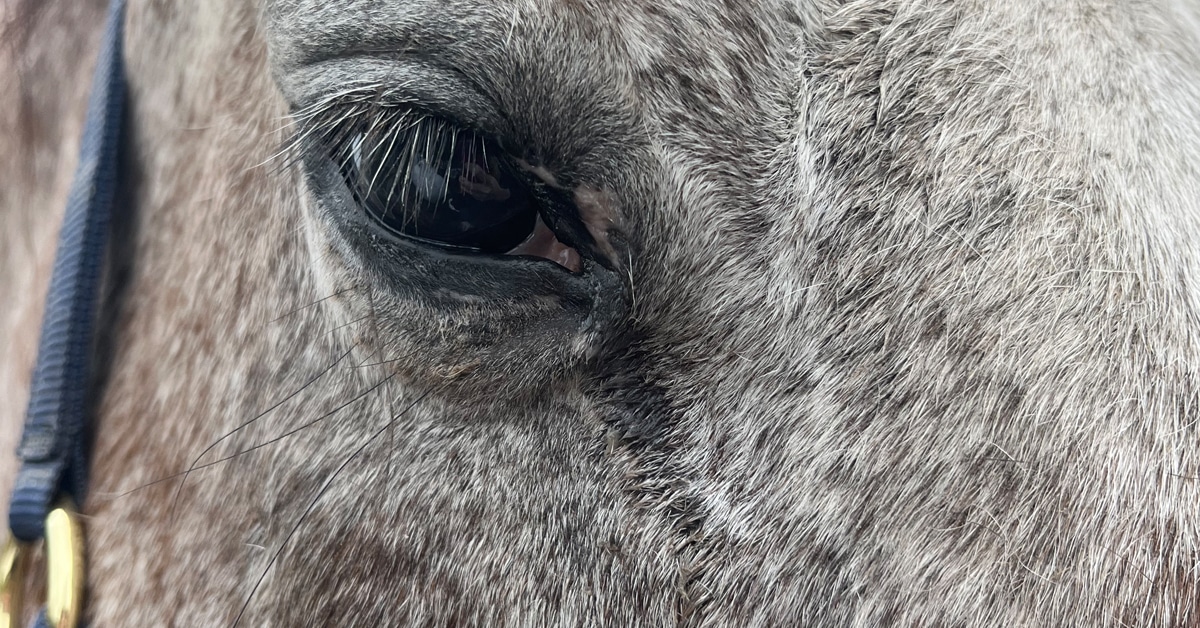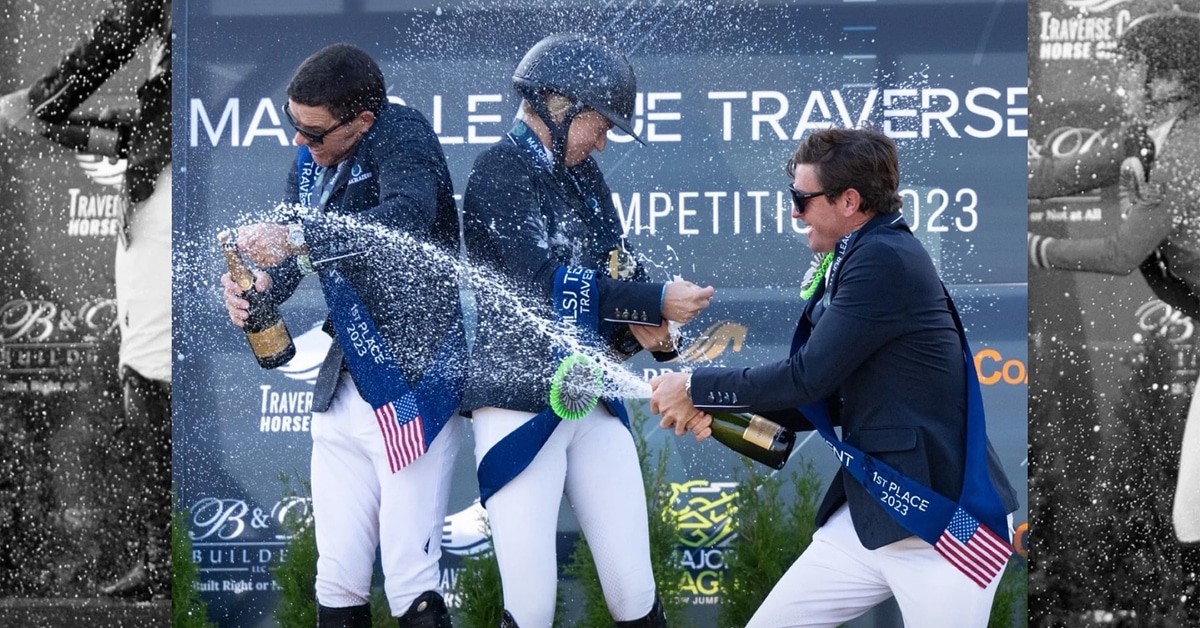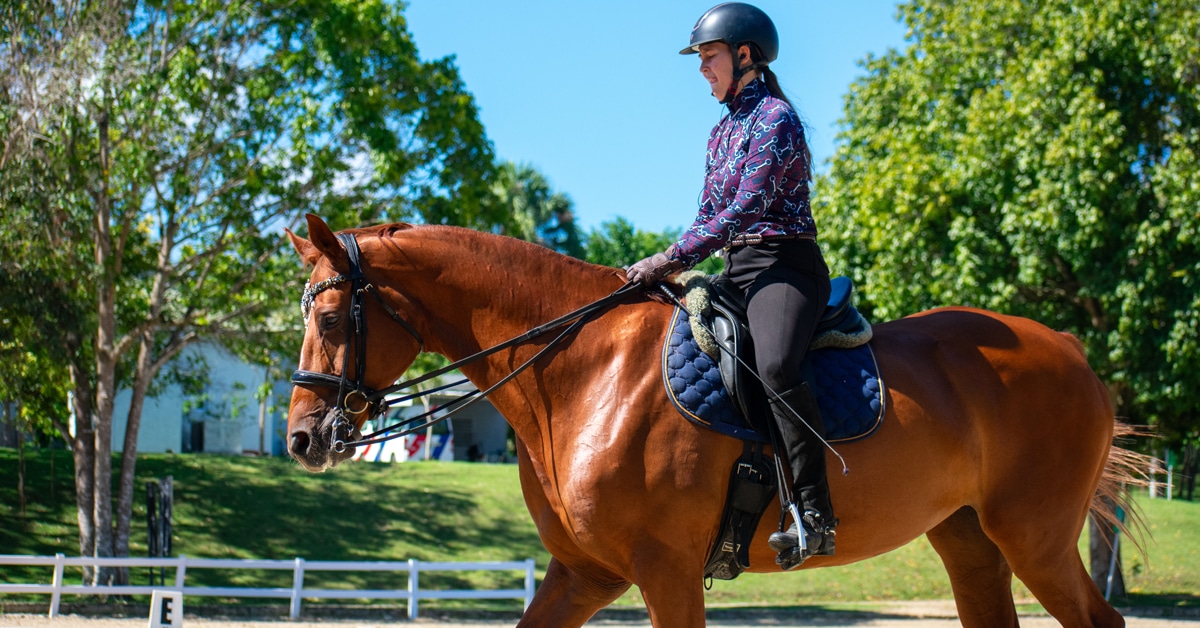There is more to evaluating a good hind end on a jumper than simply looking for a horse that doesn’t knock down the rails. “If you have the ideal horse, the hind end is just part of the classic jumping style,” believes coach and rider Mac Cone, “a classical jumping horse is what a good hind end is all about.” While unorthodox style in a horse may sometimes get you from one side to the other without any jumping faults, it is important that riders and trainers look beyond the ‘freaks’ and set the standards high for jumping technique. “We need to concentrate on making our horses as classically correct as we can,” said Cone.
At one point a student of George Morris, Cone stresses that homework needs to be practiced with an emphasis on flatwork to improve any jumping style faults. “He [Morris] always talked about the art of show jumping, not the sport of show jumping. You need to know when it’s time to work on the art, and when to work on the sport. People are going straight to the end result, which is focusing on what it takes to win in the ring, but we should all be trying to make the horse the best animal it could possibly be before going to the ring.”
CLASSIC FORM DICTATES SUCCESS
It is the mechanics of form over fences that will dictate a useful hind end and success in any ring. “Horses should jump like a top hunter — and then carry that style into the jumper ring,” explains Cone. “A beautiful jumping hunter should be a beautiful jumping jumper. A good horse is a good horse.”
When looking to buy a horse, he uses the analogy of a ‘see-saw’ to evaluate a hind end and determine if it jumps in such a way that the chances of it having rails is held to a minimum. “A horse that can use its front end, neck, and back very well forms a jump that becomes like a see-saw,” he explains. “The front end comes up first, then the neck drops, the shoulders come up, producing a nice bascule and a nice topline. Coming down, the front end is coming down, the nose and neck come down and out, and then the hind end can come up. Front end down, hind end up.”
Cone will take conformation into account when looking for a horse with classic style over fences, although more to eliminate any possible soundness issues down the road that may stem from conformation faults. “I think that conformation evaluations have a lot to do with eliminating any extremes, meaning any terribly obvious weak spots. A lot of the time it may lead to unsoundness in that area sooner or later.”
He indicates that a good jump has a lot to do with how well the horse can freely move its shoulder, and he looks for a horse with a good angle from point of shoulder to end of wither. Also important is that a horse has a solid hind end, meaning a back that is not too long, a strong gaskin, and a sense of power and natural engagement in movement. Usually, a more powerful horse can offer more scope. “But I know from experience that horses come in all shapes and sizes,” he admits, “and you just don’t know until you ask them to leave the ground.”
FIX IT WITH FLATWORK
To understand how to improve a hind end with basic flatwork skills, one must understand the mechanics of the jump. The aim is to allow the horse to create a nice bascule and develop the see-saw jump that results in the hind end finishing high and the neck and head landing low. Cone believes that one of the most important things you can accomplish during training sessions is to make a horse comfortable using itself by stretching the head and neck long and low. This encourages a round back and provides an introduction to the bascule. When it then comes time to do that off the ground and over the fence, the horse is familiar with that position and the muscles are accustomed to those demands.
“The front end of the horse must be comfortable dropping, which in turn allows the hind end to come up. You can do a lot on the flat just by getting their head and neck-set balanced in a low position. Of course, you don’t want to go around the whole course like that, but it is how you load the ‘spring’ as you approach the jump. On the approach to the fence, you should start pushing the horse away and allowing the neck to drop just a little bit, and that is the beginning of the bascule over the jump. The flatwork always carries over to the jumping. If this practice is done well in the flatwork, you see the results instantly.”
Cone describes the flatwork that has become de rigueur with all of his mounts. “All my horses, whether they are young or old, start each ride the way I would ride a four-year-old. I first take a light hold of each side of their mouth, and work on going straight with the neck and nose out at all three gaits.”
Once moving straight, long, and low, Cone works the horses with a reasonably low head, neck, and poll, especially at the trot, to work on stretching the horse’s back as much as possible. “After stretching the back, I ask for more from the horse,” he continues. “The next step is to raise them up and go to a more advanced position with their poll, looking for a more elevated and evenly-balanced horse that is carrying itself slightly higher.” In this phase of the flatwork, Cone will do more at the sitting trot, and work with transitions in short gait intervals.
At the end of what he calls his ‘basic flatwork training’, he will introduce lateral work — shoulder in/out, half passes, and leg yields — before going back to the basics to cool down: working long and low, stretching, emphasizing straightness, and always ending on a long rein walk.
Cone believes that schooling horses long and low on the flat, working the muscles from poll through the back, plays a large role in shaping their jumping technique. “Proper flatwork is the process of maintaining an athlete,” believes Cone. “I would say that way over 90 per cent of my jumping problems I solve on the flat.”
THE RIDER’S INFLUENCE
The rider has as much, or more, of an influence on the hind end of a horse over a jump than its conformation. This is true both in the training leading up to a horse’s first jump, the position a rider takes in the strides leading up to the jump, and the rider’s position in the air. “What I notice a lot nowadays is that the art of teaching a horse to jump round and jump within themselves — a classic and correct jump — is lost in many areas of the world,” says Cone. “A good jump has a lot to do with the beginning of the release two to three strides before the jump, and the rider’s role in helping to shape the jump into the correct form. Some of the releases that riders use are very backwards, defending the front end with their hands so much that it makes the hind end lower than it should be — rather than teaching the horse to take care of the front rails and verticals themselves. It’s the basics we need to remember: heels down, eyes up, let the horse jump up to you, and let the horse land with it’s head down.”
WHEN TRAINING ISN’T THE PROBLEM
Cone is always sure to eliminate the possibility of a physical problem if the horse displays anything that deviates from classical form over fences in the hind end, such as a horse with a tendency to swing its legs over the fence. “Nine times out of ten, less-than-ideal jumping form in the hind end is something physical that the horse is compensating for,” explains Mac. “We have at our disposal so much more technology in the veterinary world that it is possible to detect these problems — a sore spine, hocks, or stifle joints — and keep it to a small role, if not eliminate it. When a horse throws itself one way or the other, it’s also going to cause other problems. It starts the cycle; you must discover where it started, and how to get it to end.”
The Latest









